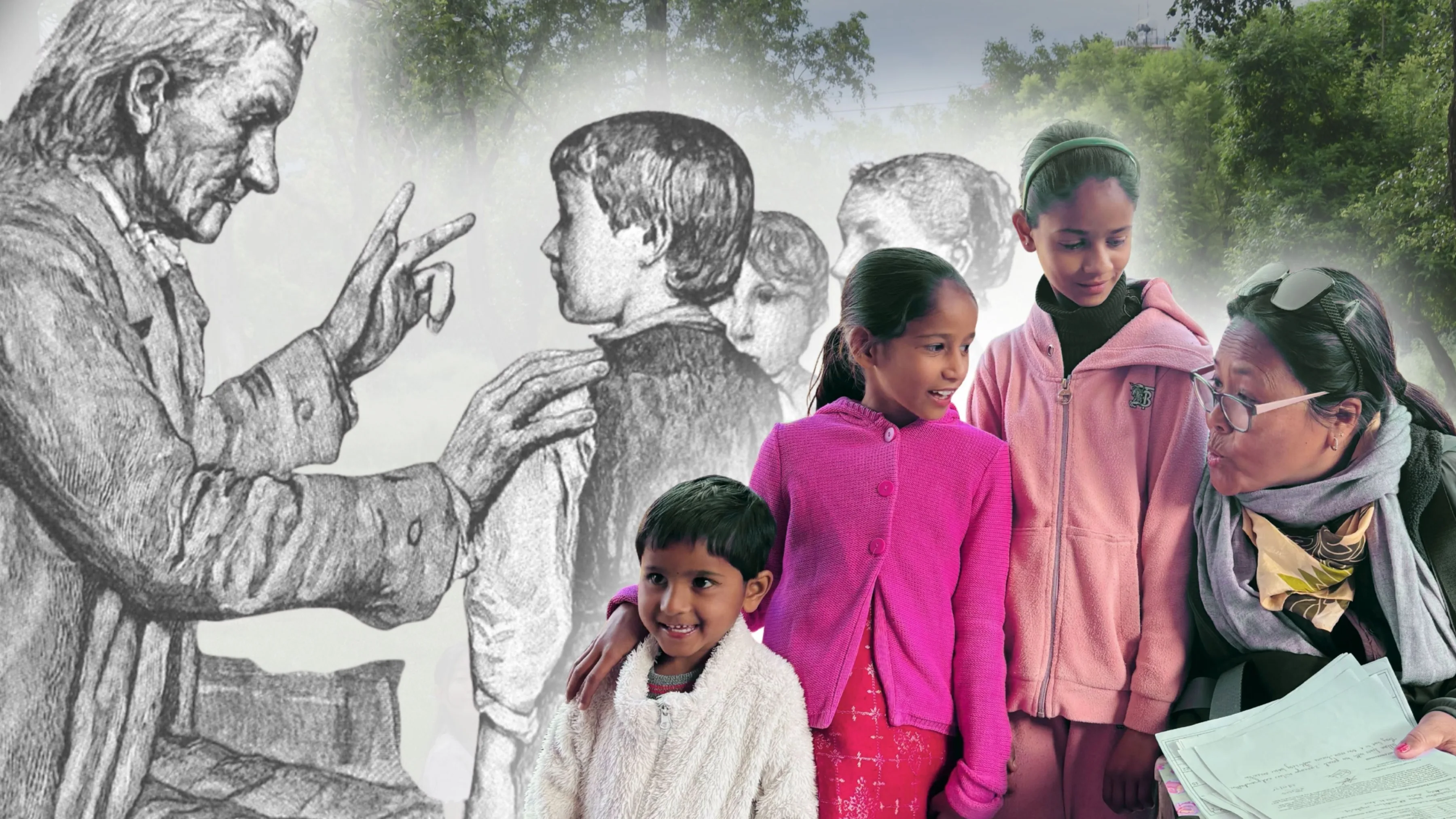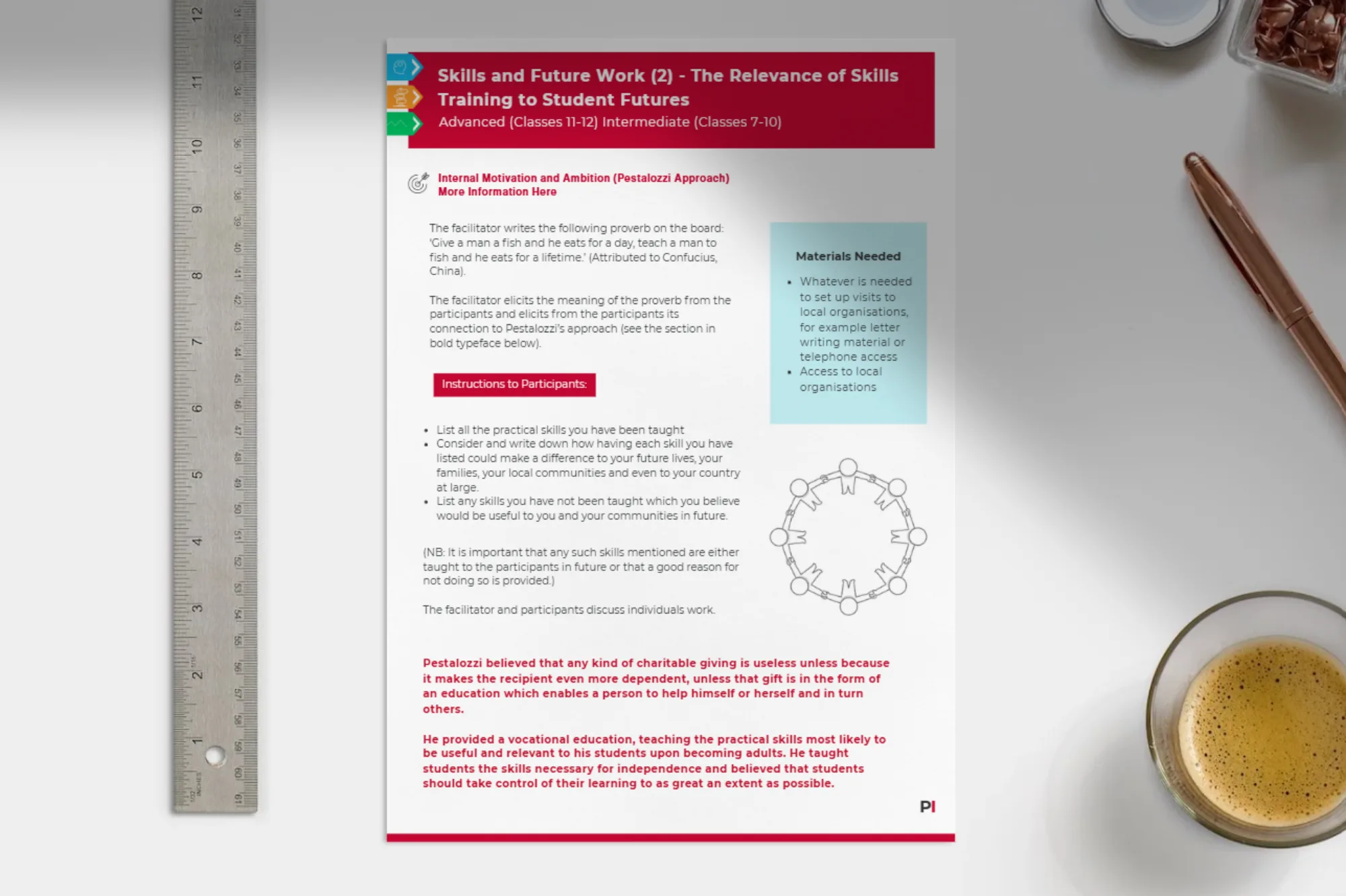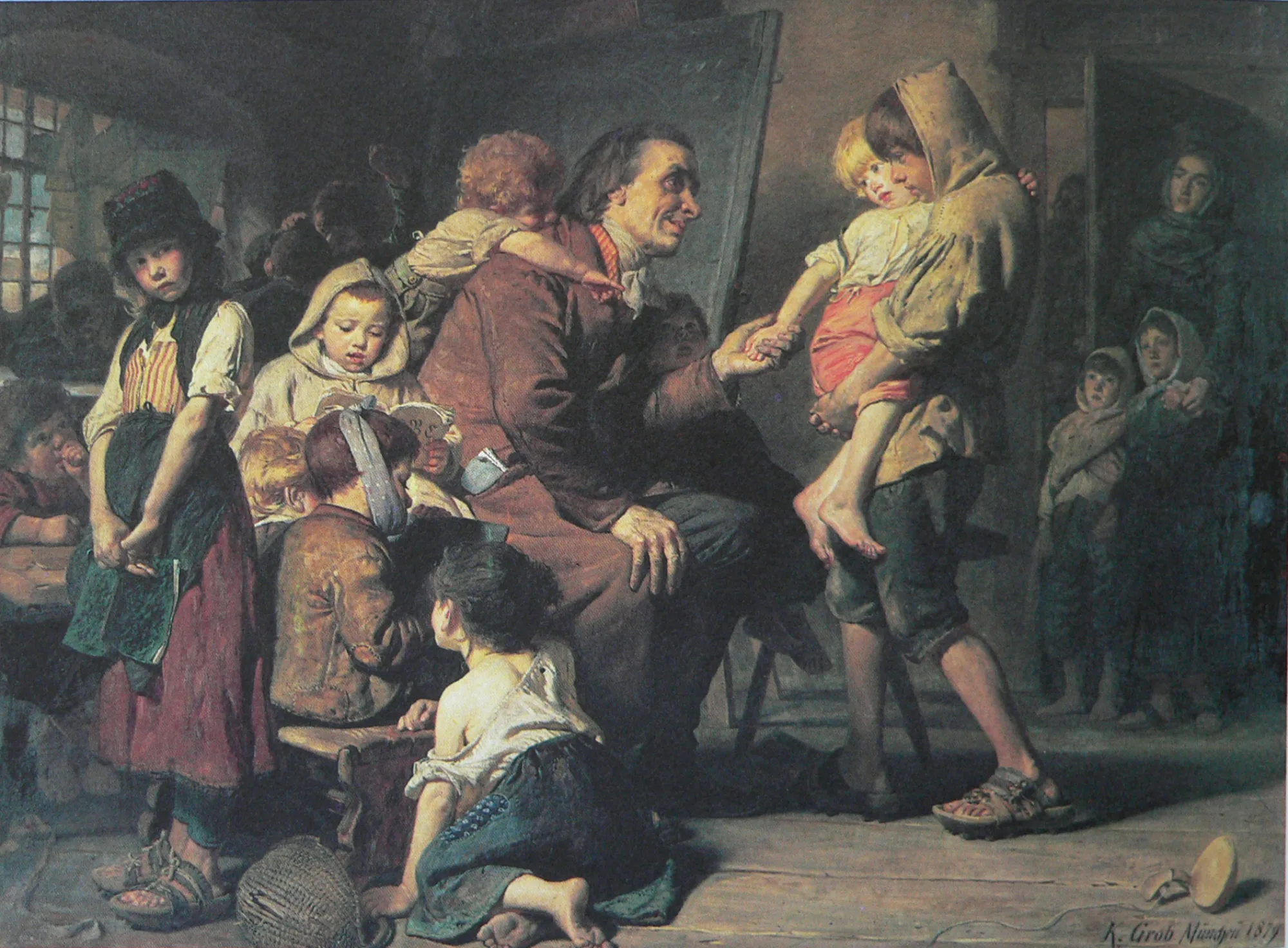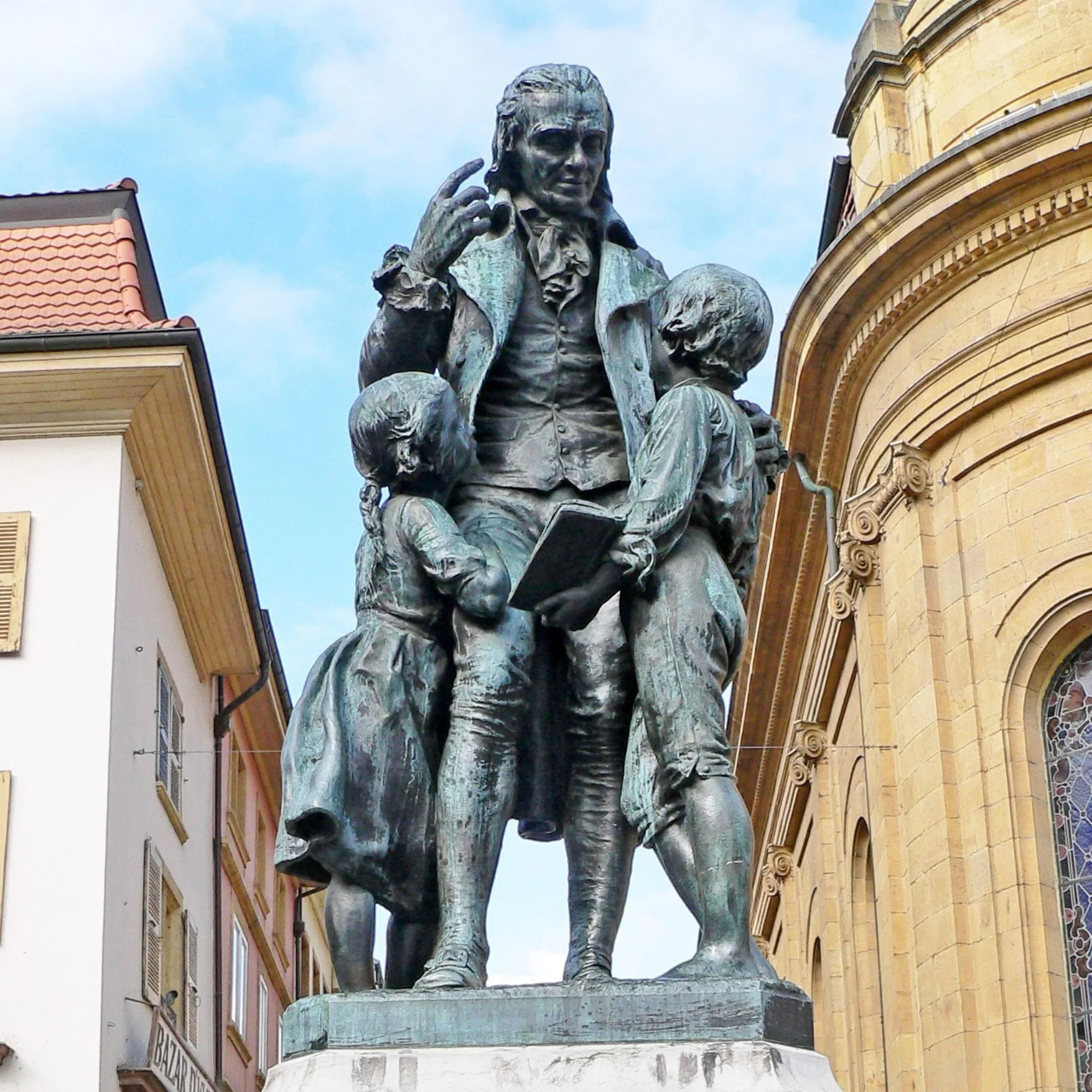
The Father of Modern Education
His vision of teaching transformed learning forever, shaping the way we view education
The Life, Fundamental Beliefs, Educational Approach and Influence of Johann Heinrich Pestalozzi
Approaches to education which we now take for granted or consider essential to the transformation of education begin with Pestalozzi:
- How things are taught is considered as important as what is taught
- A child-centred rather than teacher-centred approach to teaching and learning with the interests and needs of each child is put first. Each child is seen as a unique entity and plays an active rather than passive role in the learning experience
- The child is no longer seen as a tabula rasa or blank slate but as a seed with the full potential for growth held within. The teacher has the role of a gardener, providing the right environment and necessary support for the seed to fully develop
- The freedom of the child based on his or her natural development is prioritised
- Activity and movement is vital; Pestalozzi recognised that it is against human nature to make children sit still all day
- The child is provided with opportunities for direct experience of the world, with concrete experience and natural objects used in teaching, along with field trips and other educational excursions
- The five senses are used in training students in observation and judgement
- Subjects of instruction are systemised. These move from local and concrete to more distant and abstract. They are also carefully graduated and illustrated
- Learning is cross-curricular and includes a varied school life
- Authority is based on love, not fear. The teacher leads by example; if the teacher is loving towards the child, the child will show love to others
- Cooperation between the school and the home and between parents and teachers is encouraged
- Self-discipline is considered important to function well as an individual and in society
- An all-round heart-led head, heart and hands education is provided. The aim of a Pestalozzi education is to equip children with the academic knowledge and critical thinking, the relevant practical skills and the motivation and loving attitude required to help themselves and others
- Pestalozzi recognised that teaching is a subject that is worth studying in its own right. He is therefore known as the father of pedagogy (the method and practice of teaching, especially as an academic subject or theoretical concept). He caused education to become a separate branch of knowledge, alongside politics and other recognised areas of knowledge
The democratisation of education - Pestalozzi believed in the ability of every individual human being to learn and in the right of every individual to education. He believed that it was the duty of society to put this right into practice. His beliefs led to education becoming democratic; in Europe, education became available for everyone. Pestalozzi was particularly concerned about the condition of the poor. Some of them did not go to school. If they did, the school education was often useless for their needs. He wanted to provide them with an education which would make them independent and able to improve their own lives
More on Pestalozzi’s Fundamental Beliefs, Educational Approach and Influence

Learning for Life
Pestalozzi’s aim was to provide a complete theory of education that would lead to a practical way of bringing happiness to humankind. The modern era of education started with him, with his spirit and ideas leading to the great European educational reforms in the nineteenth century. His influence has spread globally, and many of his ideas resonate with indigenous approaches to education across the world.

Johann Heinrich Pestalozzi: An Outline of his Life and Work
A timeline of Pestalozzi’s life, ideas and schools, showing how his educational philosophy shaped modern learning.

English Language Texts and Websites about Johann Heinrich Pestalozzi
A curated list of key books, research, and websites offering comprehensive English-language resources on Pestalozzi.

Pestalozzi’s Fundamental Ideas By Dr. Arthur Brühlmeier
While Pestalozzi was primarily a pedagogue, he was also a social reformer. This document explores the philosophical and educational ideas of Johann Heinrich Pestalozzi, focusing on Anthropology (his understanding of human nature), The Nature and Function of the State, Poverty, Religion, and his vision for Upbringing and Formative Education.

Background to Education in Pestalozzi's Time
This document provides an overview of the historical context of education in Europe leading up to and during the time of Johann Heinrich Pestalozzi (1746–1827). Drawing primarily from J.A. Green’s Life and Work of Pestalozzi, it traces the evolution of educational thought from the Renaissance to the Enlightenment and beyond, highlighting key intellectual, religious, and political movements that influenced educational theory and practice.

Pestalozzi and Education
Johann Heinrich Pestalozzi (1746-1827) revolutionized education in Switzerland and beyond. Believing that every individual has the right to learn and that education should be holistic - developing the Head (intellectual abilities), Heart (moral values), and Hands (practical skills) - his work laid the foundation for democratic, child-centred education.

Pestalozzi’s Influence
Pestalozzi’s ideas spread unevenly across Europe, thriving in Germany and Spain. Discover where he gained pockets of support elsewhere in this document.

Pestalozzi’s Fables (1797)
Short moral fables using animals to reveal human nature, urging wisdom, humility, and moral growth.

Organisations Working In the Name of Pestalozzi Today
Organisations worldwide continue Pestalozzi’s vision, offering holistic, child-centred education and support.

Glimpses of Pestalozzi
Glimpses of Pestalozzi is a collection of personal reflections, biographical excerpts, and character sketches that bring to life the complex humanity and profound moral vision of Johann Heinrich Pestalozzi. Compiled from accounts by former pupils, historians, biographers, and admirers, the document contains a range of impressions that together form an intimate portrait.

The Life of Johann Heinrich Pestalozzi
This document is based on work by Adolf Haller and Arthur Brühlmeier, rewritten in German by Heinrich Rubi and translated into English by Anne-Marie Widmer. Designed and edited by Joanna Nair with examples of Pestalozzi’s ’Fables’ from ‘Pestalozzi, His Life and Work’ by Roger de Guimps.

The Pestalozzi International Toolkit
Access our collection of experiential learning resources, teaching strategies, and classroom activities aligned with holistic and values-based education.



